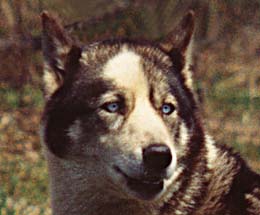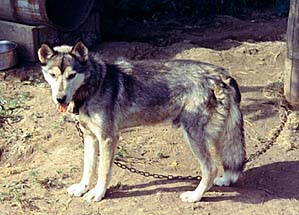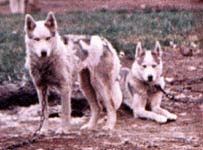
THE MAJOR BREEDERS of Seppalas, those who carried on after Leonhard Seppala returned to Alaska in 1931, were always at great pains to breed only the pure stock that went back to the Poland Spring kennel, or to Sepp's breeding in Alaska, or to his last Siberia imports in 1930. Other Siberians were around, including those from the Cooney, Johnson and Dufresne bloodlines, all out of Alaska. More importantly, there was stock from Eva B. Seeley's Chinook Kennels in Wonalancet, New Hampshire. But Harry Wheeler, Alec and Charlie Belford, William L. Shearer III and (after 1950) J. D. McFaul, all refused to make use of these sources. Seppala strain over the years developed its own main trunk of breeding lines that were entirely separate from the Seeley, Demidoff, Lombard, Bowles and other New England kennels. Seppalas as early as the 1940s were also regarded as completely distinct from the emerging show-dog bloodlines that began to resemble the original Siberian dogs less and made its influence felt.
THE YEARS IMMEDIATELY AFTER THE CLOSURE of the McFaul
kennel nearly put an end to this 'unique Seppala' history, for
the only successor kennel around was that of J. Malcolm
McDougall. He opted for Alaskan Huskies in the late 1960s in
order to compete in the fast, level, short-distance sprint races
that represented all there was of dogsled racing at that point
in time. The competition was Dom Blodgett's incredible team
of Treeing Walker Coonhounds! At that time, interest in Seppalas
was at its lowest ebb.
Had I not seen and been smitten by
DITKO OF SEPPALA and his progeny at the kennels of Bunty
Ricker Goudreau in the summer of 1968, I wonder whether we
would have Seppalas today! The force of this one dog's
personality seemed to be enough to provide impetus to the
entire Markovo rescue operation. Yet it was not until spring
of 1973 that I was really sure that Seppala strain could be
saved as a distinct genetic entity.
Within the genetic makeup of dogs like
DITKO, FROSTFIRE ANISETTE, LYL OF SEPSEQUEL, and SHANGO
OF SEPPALA, though, lay hidden all the marvellous diversity,
soundness and working sleddog ability that make Seppalas unique
to this very day. Deep within, these unassuming little dogs
were genetic giants, heirs to a titanic potential for which we
must be very grateful today.
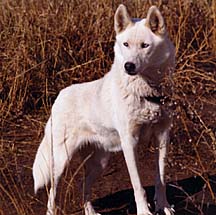
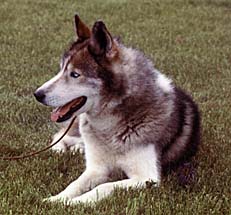
IN PARTICULAR their friendly temperaments and mental soundness turned out to be a priceless legacy. Ditko, a leader in his younger days, was a friendly, self-possessed old dog who could handle any situation. Lyl and Anisette were lively, positive, zany characters, friendly, and both superior sleddogs. Shango, despite having suffered abuse, was calm, dignified and friendly. It is these dogs whom we must thank for the stable, cooperative nature of today's Seppala Siberian Sleddogs.
